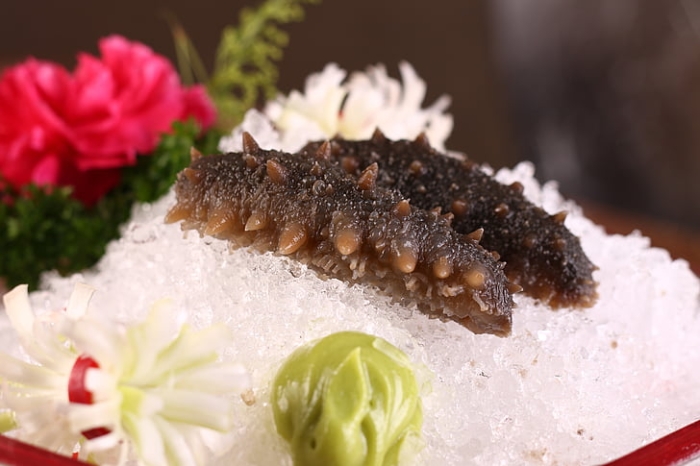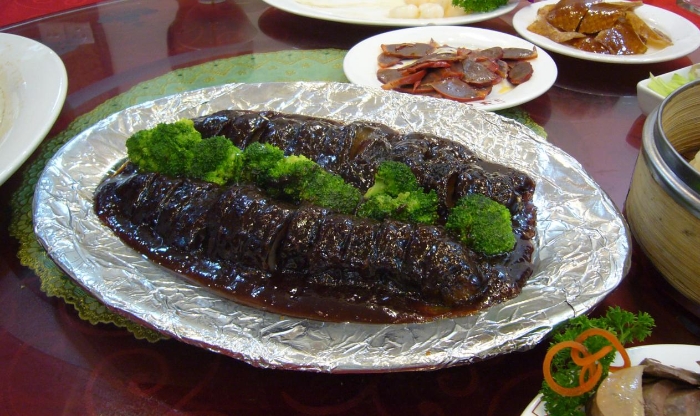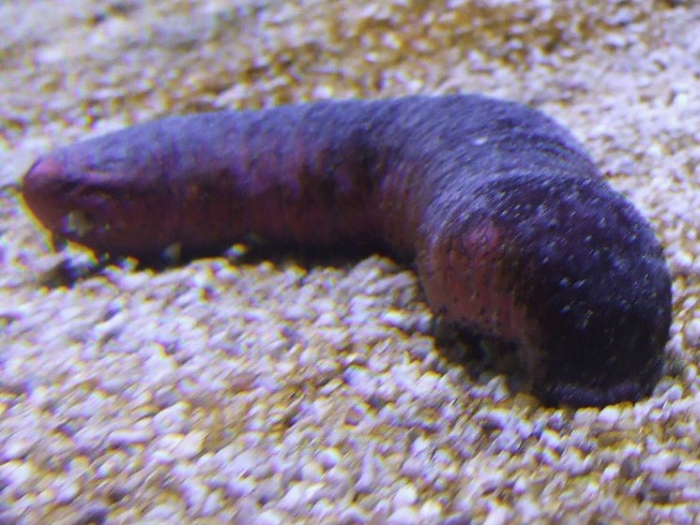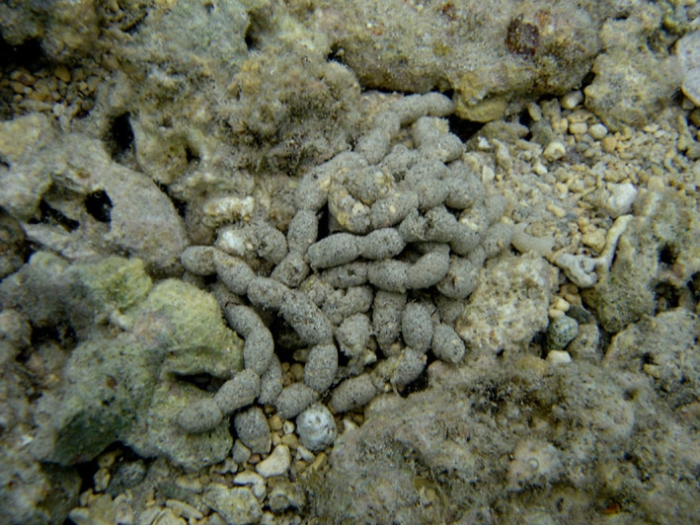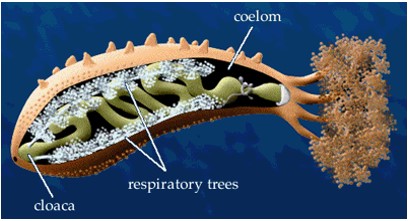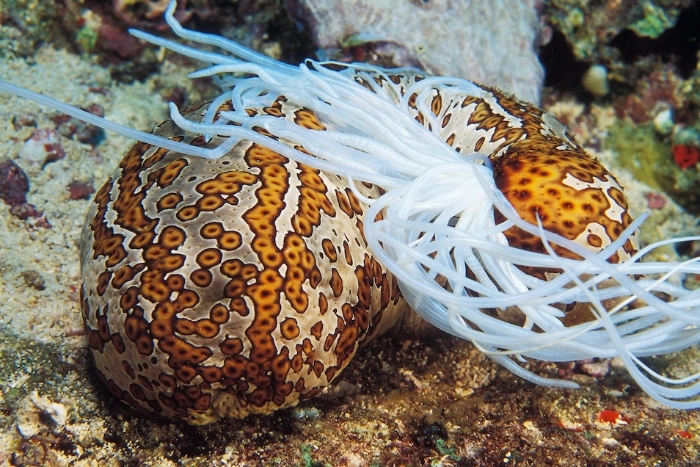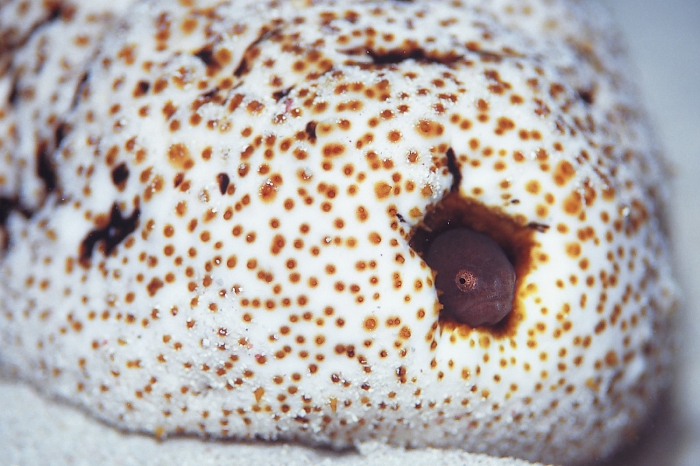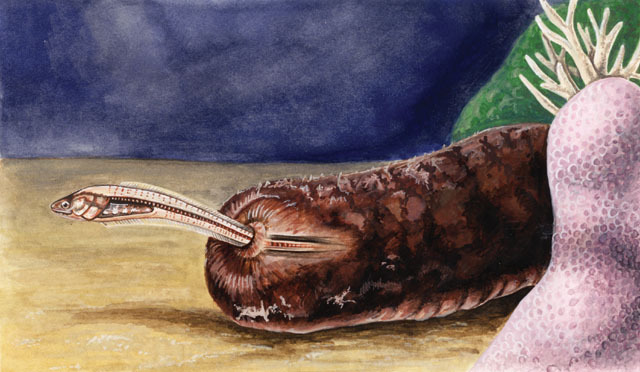The anal function of sea cucumber, as an excretory organ, is so all-rounded, isn’t it?
Even though you haven’t tasted them for yourself, you must have heard their name and seen what they look like.
When it comes to sea cucumber, almost everyone will immediately think that this is a high-quality ingredient, which is nutritious and nourishing.
Even though you haven’t tasted them for yourself, you must have heard their name and seen what they look like.
They usually look like this:
Fresh sea cucumber. Image source: hippopx
Even like this:
Cooked sea cucumber. Image source: Wikipedia
However, most people know little more about sea cucumbers except that they are delicious food. In fact, sea cucumbers have many special functions. They can not only cut themselves and regenerate like starfish (after all, both of them are members of echinodermata), but also have a powerful and omnipotent super anus.
How did this come about? Let’s have a look.
Excretion function is definitely above all
Speaking of anus, we have to say something about its most basic function-excretion.
The body of sea cucumbers is usually cylindrical, with slightly flat back and abdomen, and their anus is located at the end of the body. There are usually tiny mastoids or calcareous bone lamellae around the anus.
In contrast to the anus, the mouth of sea cucumber is located at the front end of its body. Most sea cucumbers feed on plankton and putrid organic matters in the ocean. They often stretch tentacles around the mouths to grab food from water. Sometimes, they take the initiative to scour the sea floor for food using tentacles.
A sea cucumber is foraging on gravel. Image source: Wikipedia
Many sea cucumbers directly feed on seabed sediments, which naturally include lots of indigestible gravel. However, with outstanding digestion ability, sea cucumbers can discharge the remaining gravel out of their body after fully absorbing nutrients.
The gravel treated by the digestive tract of sea cucumber is often more delicate, pure and uniform, which makes the sea cucumber get the reputation of “sea scavenger” (similar to earthworms on land). An adult sea cucumber can swallow more than 45 kilograms of sediment per year. This is very critical for the homogenization of seabed sediments.
The poop of sea cucumber. Image source: Wikipedia
It’s also great for breathing
As a matter of fact, a more important function of a sea cucumber’s anus is breathing. This is related to the unique respiratory organ of sea cucumber: aqualung (also known as respiratory tree. It is mainly discovered in Dendrochirota, Aspidochirotida and Molpadida).
The end of the intestinal canal of starfish expands, and a cloaca is formed. At the junction between intestine and cloaca, a pair of thin tubes extends to both sides of the body. These thin tubes rebranch and subdivide step by step to form a dendric structure (similar to the continuous branches of our lung trachea). This is the place where the sea cucumber gets oxygen from water.
The branches on both sides of the coelom are the respiratory tree. Image source: davisinvertebrates
As the anus of sea cucumber contracts and dilates rhythmically, water flows in and out of the anus, through the respiratory tree. Air exchange takes place on the thin wall of the branches of respiratory trees, from which oxygen enters the coelom of sea cucumber.
In addition to air exchange, the respiratory trees also assume part of excretion function, and the nitrogen-containing wastes generated by the metabolism of sea cucumber are excreted in the form of ammonia, etc.
Also used for eating once in a while
Apart from excretion and breath, the anus of sea cucumbers can be also used for eating occasionally (yes, they have a mouth, but they ingest food directly from the anus once in a while).
An isotope labeling experiment shows that sea cucumbers can absorb nutrients via respiratory trees and transfer them to the intestinal tract. The tissue sections inside respiratory trees also support this view: respiratory trees have similar structures to intestinal microvilli.
There are microvilli in the inner cavity of respiratory tree. Image source: Invertebrate Biology
Researchers also detected many algae and microorganisms near respiratory trees, which were all eaten by sea cucumbers through anus.
Although eating through anus is not the primary feeding route of sea cucumbers (it still eats through mouth), it seems to be an important supplement to the feeding route of sea cucumbers and gives sea cucumbers a chance to obtain more nutrients.
Also a secret defense weapon
The anus of sea cucumbers also becomes a secret weapon that helps them escape when they encounter predators, which has something to do with the Cuvierian organ near the cloaca of sea cucumbers.
The Cuvierian organ is a defense organ of sea cucumber, and there are hundreds of such potential secret weapons in the sea cucumber. When a sea cucumber feels stressed, they will turn their backs on predators (or curious researchers), contract muscles on the body wall fiercely, open their anus and spew out the Cuvierian organ quickly, in order to confuse the opponents.
A sea cucumber spews out the Cuvierian organ. Image source: nationalgeographic
The Cuvierian organ expands rapidly in water, and extends its length by 20 times that of the original one. Moreover, these white filaments are so sticky that they can wrap around potential predators (e.g. small fish or crabs) within 10 seconds, and buy time for sea cucumbers to escape.
In this sense, the Cuvierian organ is a consumable. Every time it is used, the quantity will become a little smaller. However, there is no need to worry. Although the Cuvierian organ can’t be recycled and reused, it has a strong regeneration ability. It won’t take long for the consumed Cuvier tubules to be replenished.
Sometimes, it is not enough to entangle the enemy simply by spewing out the Cuvierian organ. In this situation, the sea cucumber will shoot their respiratory trees and other internal organs from their anus resolutely, to defend against and confuse the enemy, and seize this opportunity to slink off.
A sea cucumber spews out its internal organ. Image source aquaanimalia
As long as a sea cucumber who loses its internal organ can have a narrow escape from death, it won’t take it too long (30-50 days) to grow a new organ. This regeneration ability is worthy of the name of a relative of starfish.
Even home to some animals
Being able to eat, drink, breathe and defend the enemy, the anus of sea cucumber is so terrific that it is targeted by some small animals in the ocean. They live in sea cucumbers, enter and exit via the sea cucumbers’ anus freely, thereby forming a symbiotic or parasitic relationship with sea cucumbers.
The sea cucumber is my house. Image source: cool green science
The most typical example is Echiodon rendahli, which has established a stable symbiotic relationship with sea cucumbers (many species of pearlfish like parasitizing sea cucumbers). Adult pearlfish live in the cloaca of sea cucumbers, with a view to avoid the attack of predators and get food (water flows in and out of the anus of sea cucumbers, thus bringing food for pearlfish). Many worms and some crabs (e.g. lissocarcinus orbicularis) also live in sea cucumbers, while the latter provides shelter for them. A starfish often accommodates many tenants simultaneously (in one experiment, 14 pearlfish swam out of the anus of a sea cucumber).
The pearlfish enters and exits through the anus of starfish. Image source: animaldiversity
Most of the time, this kind of symbiosis is not beneficial to sea cucumbers, and sea cucumbers may get hurt because of frequent entry and exit of “propygium” tenants, which makes the “landlord” at the end of its resources.
Having learned so much about the magical effect of the anus of sea cucumber, do you find that you can no longer look directly at the dish of sea cucumber?

